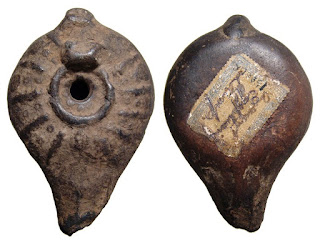The Tucson artifacts: An elaborate hoax?
Also known as the Silverbell artifacts or Tucson Lead Crosses, the collective Tucson artifacts are comprised of 31 lead objects found by a certain Charles E. Manier and his family near Picture Rocks, Arizona in 1924. There have been countless debates on the authenticity of these religious objects, with the current, dominant view being that they are fake, explains New York-based ancient art and artifact gallery Sadigh Gallery.
For one, it proved immensely improbable that the various lead objects (which include swords, crosses, and an assortment of religious paraphernalia) were brought to the United States by Mediterranean travelers (believed by Manier to be a Roman Judeo-Christian colony) who had crossed the Atlantic during the first century. The artifacts themselves have either Latin or Hebrew inscriptions engraved onto them, including angels, temples, and even a dinosaur on one sword blade. The objects likewise had Roman numeral inscriptions spanning the dates 790 to 900.
Interestingly, the dig site didn’t initially turn up any sign of housing, human remains or animal fossils, and other related artifacts like pottery shards or broken glass. Further excavations were done between 1924 and 1930, but no other significant objects were discovered in the lime-cemented soil particles.
When the Latin inscriptions were translated, it was found that they were taken from classical authors such as Horace, Cicero, and Virgil, which were Latin texts already accessible in Tucson at the time of the discovery. In other words, the same texts were found in locally available books of the period. Moreover, later excavations that examined the objects’ surface when they were unearthed suggested that the Tucson artifacts were planted, Sadigh Gallery adds.
Sadigh Gallery is a family-owned, New York-based art gallery specializing in ancient artifacts, artwork, and coins. It provides affordable ancient artifacts for collectors of every level. Visit this blog for related posts.
 |
Image source: ancient-origins.net
|
 |
Image source: theepochtimes.com
|
Interestingly, the dig site didn’t initially turn up any sign of housing, human remains or animal fossils, and other related artifacts like pottery shards or broken glass. Further excavations were done between 1924 and 1930, but no other significant objects were discovered in the lime-cemented soil particles.
When the Latin inscriptions were translated, it was found that they were taken from classical authors such as Horace, Cicero, and Virgil, which were Latin texts already accessible in Tucson at the time of the discovery. In other words, the same texts were found in locally available books of the period. Moreover, later excavations that examined the objects’ surface when they were unearthed suggested that the Tucson artifacts were planted, Sadigh Gallery adds.
Sadigh Gallery is a family-owned, New York-based art gallery specializing in ancient artifacts, artwork, and coins. It provides affordable ancient artifacts for collectors of every level. Visit this blog for related posts.



Comments
Post a Comment